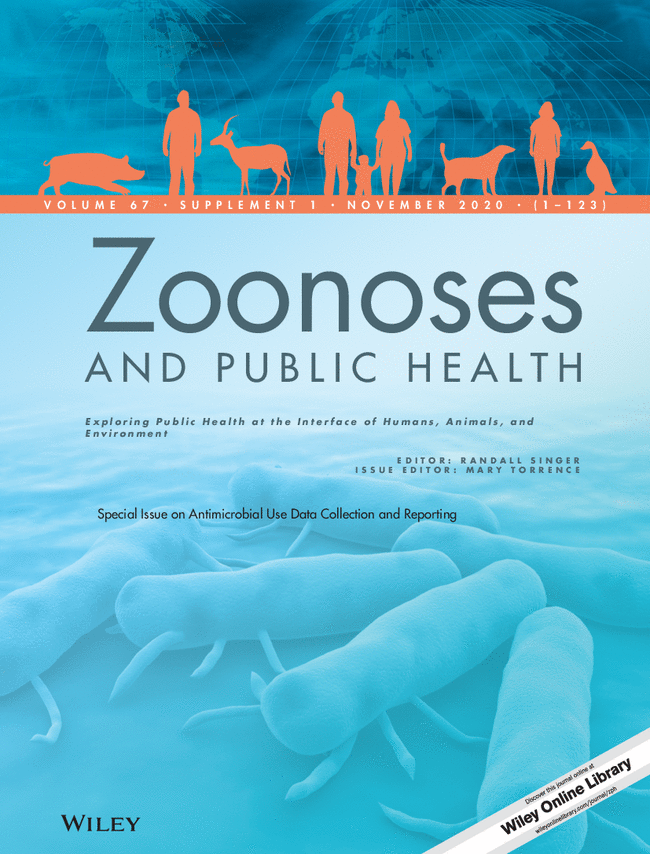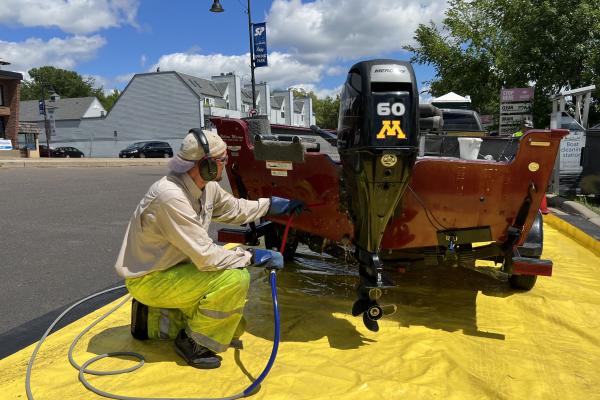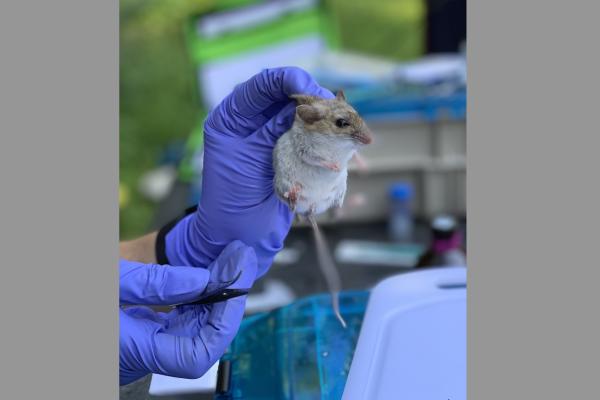University of Minnesota and Kansas State University researchers publish special issue on antimicrobial use in U.S. animal agriculture
November 17, 2020

Released during the 2020 U.S. Antibiotic Awareness Week, this Zoonoses and Public Health publication highlights collaboration among academics, the FDA Center for Veterinary Medicine, and U.S. food animal industries.
ST. PAUL, MINN. --- A team of researchers from the University of Minnesota and Kansas State University has partnered in a cooperative agreement with the U.S. Food and Drug Administration Center for Veterinary Medicine (FDA-CVM) to develop pilot systems for collecting and analyzing antimicrobial use data from U.S. beef feedlot, dairy, swine, turkey, and chicken production settings. The results have just been published in a special issue of Zoonoses and Public Health, an international journal that publishes integrated and global approaches to disease transmission and public health at the interface of human and animal health. The USDA Center for Epidemiology and Animal Health helped develop data collection systems and perform data analysis. The project was largely funded by the FDA-CVM.
Randall Singer, DVM, MPVM, PhD, a professor of epidemiology at the University of Minnesota College of Veterinary Medicine’s (CVM) Department of Veterinary and Biological Sciences led the poultry project, while Peter Davies, BVSc, PhD, professor in the CVM’s Department of Veterinary Population Medicine (VPM) led the swine project and Michael Apley, DVM, PhD, DACVCP, professor at Kansas State University College of Veterinary Medicine, led the beef and dairy cattle projects. Sandra Godden, DVM, professor in the VPM, was a collaborator on the dairy cattle project.
Each of these projects set out to preserve the ability to use effective antimicrobials in the therapy of disease for both humans and animals. To ensure that antimicrobials are used responsibly and judiciously in animal agriculture it is important to fully understand how antimicrobials are currently used on-farm. Food animal producers and veterinarians also benefit from knowing how their current antimicrobial use compares to their peers. These goals require systems that are capable of gathering data from varying record systems and standardizing and reporting the data in a meaningful way.
“Data collection approaches and challenges differed for each animal species, but we all succeeded in these pilot projects to create a system for gathering on-farm antimicrobial use data,” says Singer. “I’m particularly proud of the poultry effort, where companies producing almost 90 percent of U.S. broiler chicken and almost 70 percent of U.S. turkey voluntarily participated.”
Davies says this effort represents a true public-private partnership that he and the team hope to build upon. “I am indebted to the pioneering companies, and their staff, who devoted time and effort to advance the cause of antibiotic stewardship in the swine industry,” Davies says. “I am also grateful for the collaborative spirit fostered by our partners at the FDA, and also U.S. Department of Agriculture Center for Epidemiology and Animal Health, the members of the swine industry task force, and to my colleagues working across the other species.”
Godden is grateful to the veterinarian and producers who, she says, enthusiastically participated in the study. “We expect that the products of this research program should benefit not just the dairy industry as a whole, but should also aid individual producers in evaluating and advancing their own on-farm antimicrobial stewardship programs.”
Singer and Davies have served on the Presidential Advisory Council for Combating Antibiotic-Resistant Bacteria, and Apley continues to serve on the Council.
University of Minnesota College of Veterinary Medicine experts available for comment
Peter Davies, [email protected], antimicrobial use in swine
Sandra Godden, [email protected], antimicrobial use in dairy cows
Randall Singer, [email protected], antimicrobial use in chickens and turkeys
Overview of articles
Antimicrobial use data collection in animal agriculture
Susan J. Bright-Ponte, Center for Veterinary Medicine, US Food and Drug Administration
An introduction covering the impetus for this issue, and the objective of the research within.
Antimicrobial use in wean to market pigs in the United States assessed via voluntary sharing of proprietary data
Peter R. Davies, Randall S. Singer
Researchers collected data on antimicrobial use for two calendar years from swine producers in the United States. Findings from this study demonstrate the feasibility of acquiring antimicrobial use data via voluntary sharing. The approach is currently being expanded among larger swine production systems, and the swine industry is pursuing further efforts to enable confidential data sharing and benchmarking for smaller producers.
Estimates of on-farm antimicrobial usage in broiler chicken production in the United States, 2013–2017
Randall S. Singer, Leah J. Porter, Nora F. D. Schrag, Peter R. Davies, Michael D. Apley, Kathe Bjork
This study aimed to develop a system for collecting on-farm antimicrobial use data from the US broiler industry and to have it represent the largest commercial broiler producers in the United States, which comprise the vast majority of national broiler production. While the reduced antimicrobial amounts used in the study may indicate improved stewardship, the scientists on the project emphasize that reducing the need for antimicrobials through improved disease prevention should be considered a more important objective and a better indicator of overall flock health and optimal antimicrobial use.
Estimates of on-farm antimicrobial usage in turkey production in the United States, 2013–2017
Randall S. Singer, Leah J. Porter, Nora F. D. Schrag, Peter R. Davies, Michael D. Apley, Kathe Bjork
For this study, researchers set out to develop a system for collecting on-farm antimicrobial use data from the US turkey industry and to have it represent the largest commercial turkey producers in the United States that comprise the vast majority of national turkey production. These researchers found that reducing the total amounts of antimicrobials used might be a crude indicator for mitigating the selection of antimicrobial resistance. Additionally, they found that reducing the need for such use and verifying that treatment regimens deliver beneficial outcomes to animal health are more meaningful objectives.
Antimicrobial use quantification in adult dairy cows – Part 1 standardized regimens as a method for describing antimicrobial use
Nora F. D. Schrag, Michael D. Apley, Sandra M. Godden, Brian V. Lubbers, Randall S. Singer
This study describes a process to acquire and convert farm treatment records into a standardized regimen format. The method established in this project will inform future research, surveillance, and policy.
Antimicrobial use quantification in adult dairy cows–Part 2 developing a foundation for pharmacoepidemiology by comparing measurement methods
Nora F. D. Schrag, Michael D. Apley, Sandra M. Godden, Randall S. Singer, Brian V. Lubbers
In this article, experts compare nine measures of antimicrobial use pertaining to adult cows in US dairy systems based on treatment records standardized to a single format. Their findings may allow those developing dairy antimicrobial stewardship programs to better understand the potential effects of measurement selection on driving changes in antimicrobial use.
Antimicrobial use quantification in adult dairy cows – Part 3 – Use measured by standardized regimens and grams on 29 dairies in the United States
Nora F. D. Schrag, Sandra M. Godden, Michael D. Apley, Randall S. Singer, Brian V. Lubbers
This study reports on antimicrobial use in terms of standardized regimens per cow year and grams per cow year for 29 dairies in the United States during the years 2016 and 2017. The research team’s findings highlight the need for a more complete understanding of the relationship between antimicrobial use measures and their relationship to antimicrobial resistance selection pressure.
Antimicrobial use in 22 U.S. beef feedyards: 2016–2017
Katie J. Hope, Michael D. Apley, Nora F. D. Schrag, Brian V. Lubbers, Randall S. Singer
This study describes antimicrobial use in 22 U.S. beef feedyards by use of two metrics: milligrams of antimicrobial per kilogram of live weight sold and antimicrobial regimens per animal year. The main goal for this project was to understand the feasibility of collecting antimicrobial use data at the level of the production system and to identify factors unique to feedyard systems.
Comparison of surveys and use records for quantifying medically important antimicrobial use in 18 U.S. Beef Feedyards
Katie J. Hope, Michael D. Apley, Nora F.D. Schrag, Brian V. Lubbers, Randall S. Singer
Researchers on this study endeavored to reconcile medically important antimicrobial use metrics derived from in-person surveys of feedyard management as opposed to metrics derived from production unit-level antimicrobial use records. Their results demonstrate that survey-based antimicrobial use data may closely reflect summary values determined from records across multiple beef feedyards. However, individual feedyard relationships between their record and survey values vary widely and ranking by survey may lead to different conclusions as to highest and lowest use than ranking by data collected from use records.
###


